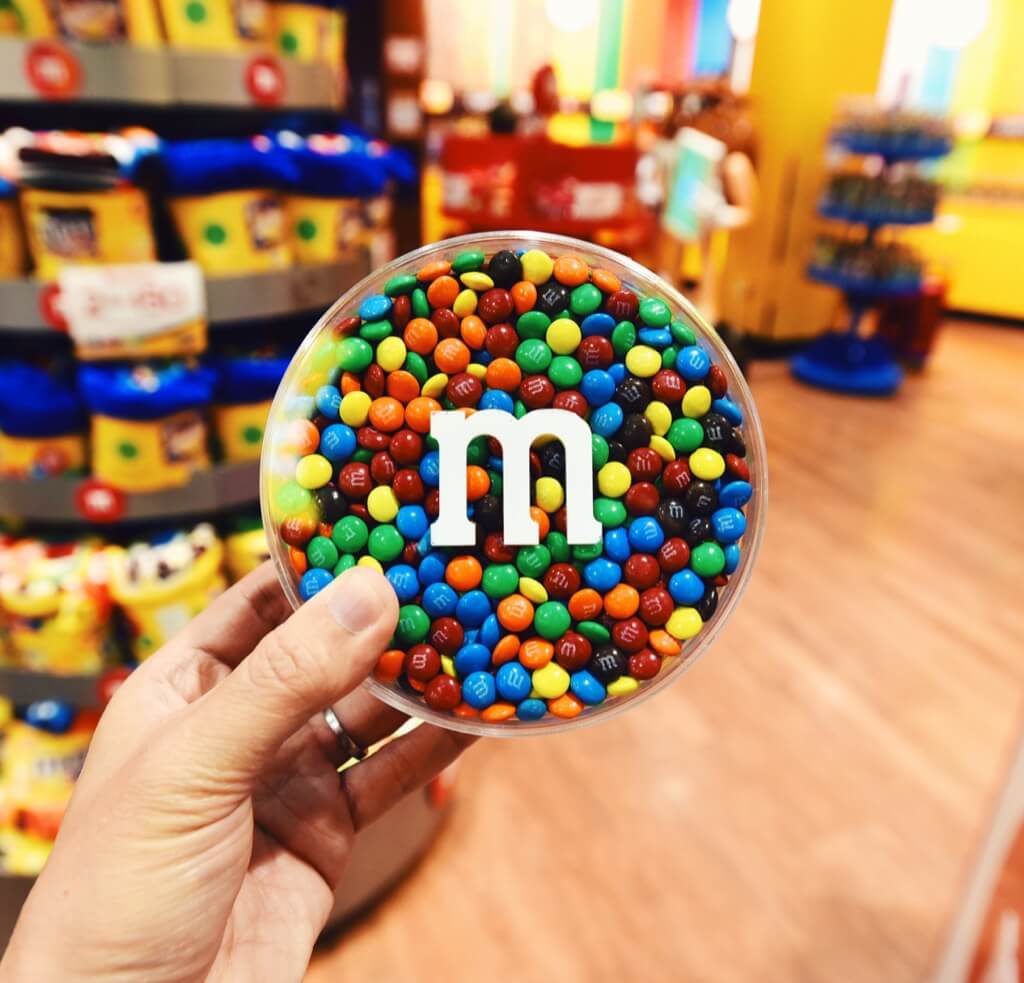M&Ms, with their signature “m” marking and vibrant colors, are more than just a sweet treat; they’re a marvel of confectionery engineering. This article explores the intricate process behind the creation of these iconic candies, from the chocolate core to the final branding.
The process of making an M&M begins with the creation of its chocolate center. This chocolate is meticulously mixed and then poured into spherical molds. These molds shape the chocolate into perfect circles, preparing them for the next stage in their transformation.
Once the chocolate centers are formed, they undergo a coating process. Each piece is bathed in a colored liquid, forming the hard, colorful shell that M&Ms are known for. This shell not only adds visual appeal but also ensures that the candy doesn’t melt in your hand.
The most distinctive feature of an M&M is the white “m” on each piece. This is applied using a method akin to offset printing, a technique also used in high-quality graphic printing on various materials. Offset printing involves transferring an image to an intermediary surface before printing it onto the final product.
In M&M’s case, an original image is inked onto metal plates. A rubber cylinder, or ‘blanket’, then transfers the image from these plates to the candies. This indirect approach is crucial due to the spherical shape and fragility of M&Ms. The rubber blanket ensures that the right amount of pressure is applied, branding the candy without damaging it.
This printing process is not only gentle on the candies but also extends the lifespan of the master metal plates. With millions of M&Ms being produced every hour, the durability of these plates is vital for efficient production. Peanut M&Ms pose a unique challenge due to their irregular shape. Despite the precision of the manufacturing process, some peanut M&Ms bypass the stamping phase to avoid breaking their shells. This intentional step in the process ensures quality control and maintains the integrity of the candy.
The Strategic Alliance in M&M’s Inception
The inception of M&M’s is rooted in a strategic alliance shaped by wartime necessity. During World War II, the scarcity of resources, particularly chocolate, catalyzed a unique collaboration in the confectionery industry. Forrest Mars Sr., representing Mars Candy, recognized the impending chocolate shortage as a significant hurdle. In a move to secure a steady supply, he partnered with Bruce Murrie. Murrie’s involvement was pivotal, given his direct connection to Hershey’s, one of the largest chocolate manufacturers in the United States at the time. This partnership was not only a business venture but also a tactical response to the challenges posed by the global conflict.
Bruce Murrie’s role in the creation of M&Ms cannot be overstated. As the son of William Murrie, the president of Hershey, he held a significant stake in the chocolate supply essential for the candy’s production. His initial 20% investment in the venture was more than just financial; it represented a crucial link to Hershey’s resources. This partnership allowed Mars to circumvent the challenges of chocolate rationing, ensuring a consistent supply of the new candy. Murrie’s involvement was a key factor in the successful launch and early growth of M&M’s.
The end of World War II marked a shift in the chocolate industry, with rationing coming to an end and normalcy slowly returning to the market. This transition period was critical for M&M’s. Forrest Mars saw an opportunity to consolidate his control over the brand and purchased Bruce Murrie’s share, effectively bringing the entire operation under the Mars umbrella. This move was significant for the company, allowing for greater autonomy and decision-making in the direction of M&M’s. Despite this change in ownership, the M&M name persisted, serving as a historical nod to the brand’s origin and the partnership that made it possible.
The One-Sided Branding of M&Ms
A common curiosity about M&Ms is whether the “M” appears on both sides of the candy. In reality, each M&M is marked with a single “m” on one side only. This design choice simplifies the manufacturing process and has become a signature aspect of the brand’s identity. The decision to print the “m” in lowercase on M&Ms adds a subtle yet recognizable touch to this popular confectionery item.
The color scheme of M&Ms has evolved over the years. Notably, the original purple M&M was replaced with tan in 1949. However, in 1995, following a public vote and advertising campaigns, including during the Super Bowl and Mardi Gras, blue was introduced to the mix, winning over pink and purple options. This change was a result of one of the largest consumer polls at the time, demonstrating Mars’ commitment to engaging with its audience and evolving the brand.
The pricing of M&Ms, like many consumer goods, is influenced by various economic factors. Increases in the costs of raw materials, packaging, and energy directly affect the price of M&Ms. Mars Incorporated, the maker of M&Ms, adjusts prices to manage these fluctuating costs. This approach ensures the sustainability of the business while striving to maintain the quality and availability of their products.
Rarity of M&M Colors
The rarity of certain M&M colors has been a topic of interest and even debate among fans. Research and analysis have revealed that brown M&Ms are the rarest, comprising approximately 13.48% of all M&Ms. This discovery contradicts earlier data provided by Mars and highlights the dynamic and somewhat unpredictable nature of M&M production. Understanding the distribution of colors in M&Ms is not just a matter of curiosity but also speaks to the brand’s manufacturing processes and quality control standards.
Sweet M&Ms Facts
- Blue M&Ms were introduced in 1995, replacing the tan ones. This change came after a public vote, making blue a relatively new addition to the M&M color palette.
- M&Ms have been a part of astronaut’s space food since the 1980s. They are valued for their compact size and ease of eating in zero-gravity environments.
- M&Ms come in special colors for various holidays. For example, pastel-colored M&Ms are released for Easter, and red and green ones are popular during Christmas.
- M&Ms have been used in art projects and installations. Artists have created portraits and mosaic pieces using the various colors of M&Ms.
- M&Ms had a cameo in the classic movie “E.T. the Extra-Terrestrial,” but they were replaced by Reese’s Pieces after Mars declined the product placement offer.
- Mars Inc., the maker of M&Ms, has committed to various environmental efforts, including aiming to reduce their carbon footprint and using sustainable cocoa.
- Occasionally, Mars releases limited edition packages of M&Ms that contain candies of only one color, making them a collector’s item.
- In different countries, M&Ms come in unique flavors catering to local tastes. For instance, in Asia, there are flavors like green tea.
- The animated M&M characters introduced in the 1990s have become iconic. Each color M&M has a distinct personality in advertisements, adding a storytelling element to the brand.
- M&Ms have inspired fashion items and accessories. Designers have used the brand and its colorful candies as motifs in clothing, jewelry, and handbags.
The technique used to brand each M&M with its iconic “m” stands out as a marvel of confectionery engineering. It’s fascinating to think that what seems like a simple marking is actually the result of an intricate process involving edible paper. This method ensures that the “m” remains intact, floating to the surface in water, a testament to the candy’s design ingenuity. It’s a small detail, but one that captures the essence of M&M’s.




